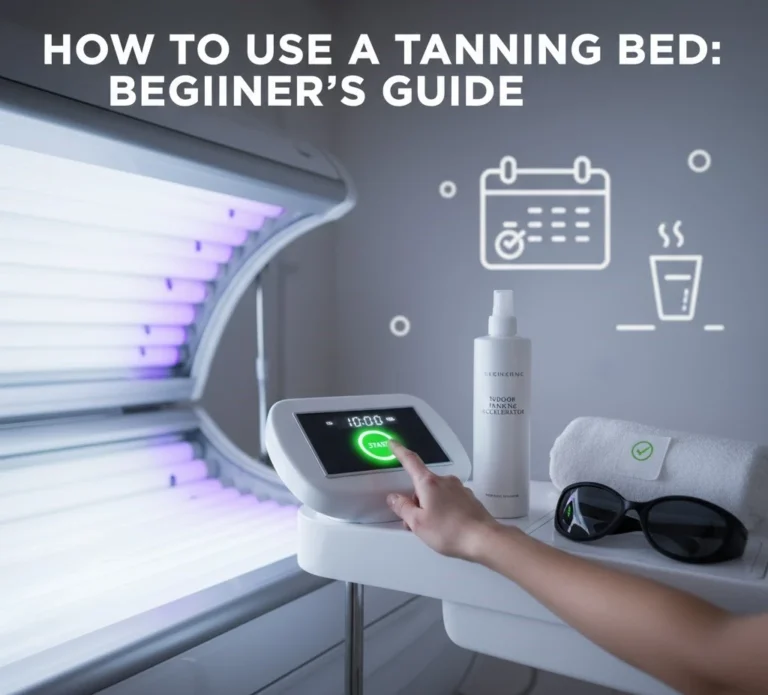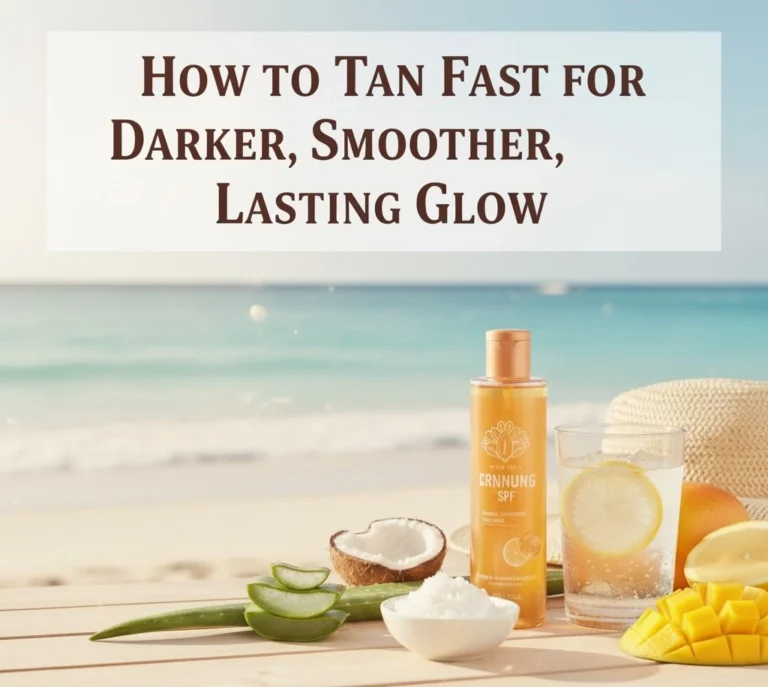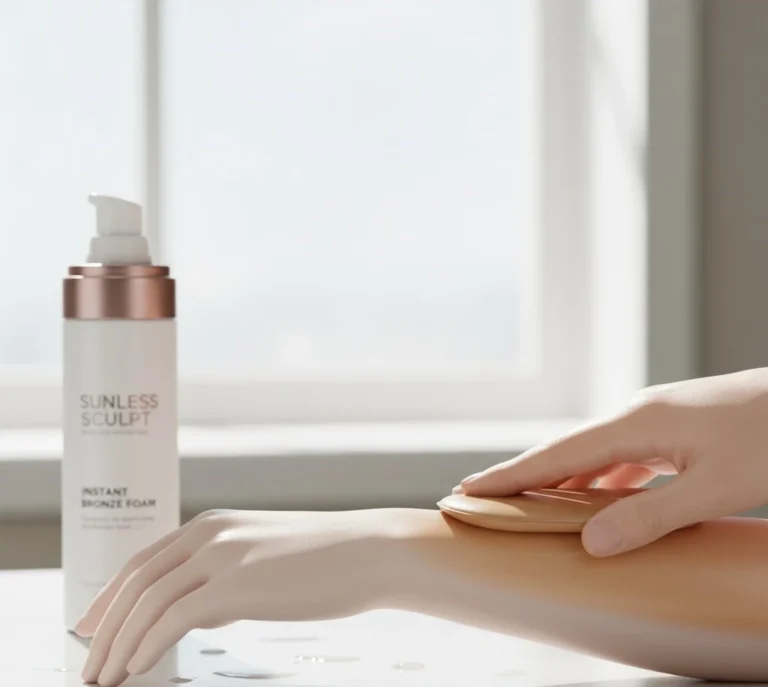How Often You Should Tan and Skin Type: Safe Tanning by Skin Tone
Tanning frequency depends on your skin type. Your natural tone, UV sensitivity, and tanning method determine how often your skin can safely handle sun or artificial light. Understanding your skin’s limits prevents burns and long-term damage while giving you better, more even results.
Everyone’s skin responds differently. A fair-skinned person may need long recovery after short sessions, while someone with deeper skin might tolerate more frequent exposure. By the end of this guide, you’ll know how to plan a tanning schedule that matches your skin type and keeps your skin healthy.
Table of Contents
Understanding Your Skin Type Before Tanning
Before tanning, it helps to identify your skin type using the Fitzpatrick Skin Type Scale. Developed by Dr. Thomas Fitzpatrick at Harvard Medical School, this scale classifies skin based on how it reacts to UV light.
According to Healthline and the American Academy of Dermatology, there are six main types:
| Fitzpatrick Type | Description | Reaction to UV |
|---|---|---|
| I | Very fair, freckles, red or blond hair | Always burns, never tans |
| II | Fair, light eyes and hair | Burns easily, tans lightly |
| III | Beige to light brown | Sometimes burns, tans gradually |
| IV | Olive or light brown | Rarely burns, tans easily |
| V | Brown | Very rarely burns, tans deeply |
| VI | Deep brown to black | Never burns, deeply pigmented |
Melanin levels are what make these types different. More melanin means more natural UV protection. People with lighter skin (Types I and II) have less melanin, so they burn quickly. Darker skin types (V and VI) have more melanin, providing higher resistance to UV rays, but they can still be damaged by excessive exposure.
Knowing your skin type lets you set safe limits and avoid overexposure, which is the first rule of responsible tanning.
Skin Type I and II: Very Fair to Fair Skin
Fair skin burns within minutes and tans minimally. These skin types should avoid long exposure and tan infrequently. Always use SPF and allow enough recovery time between sessions.
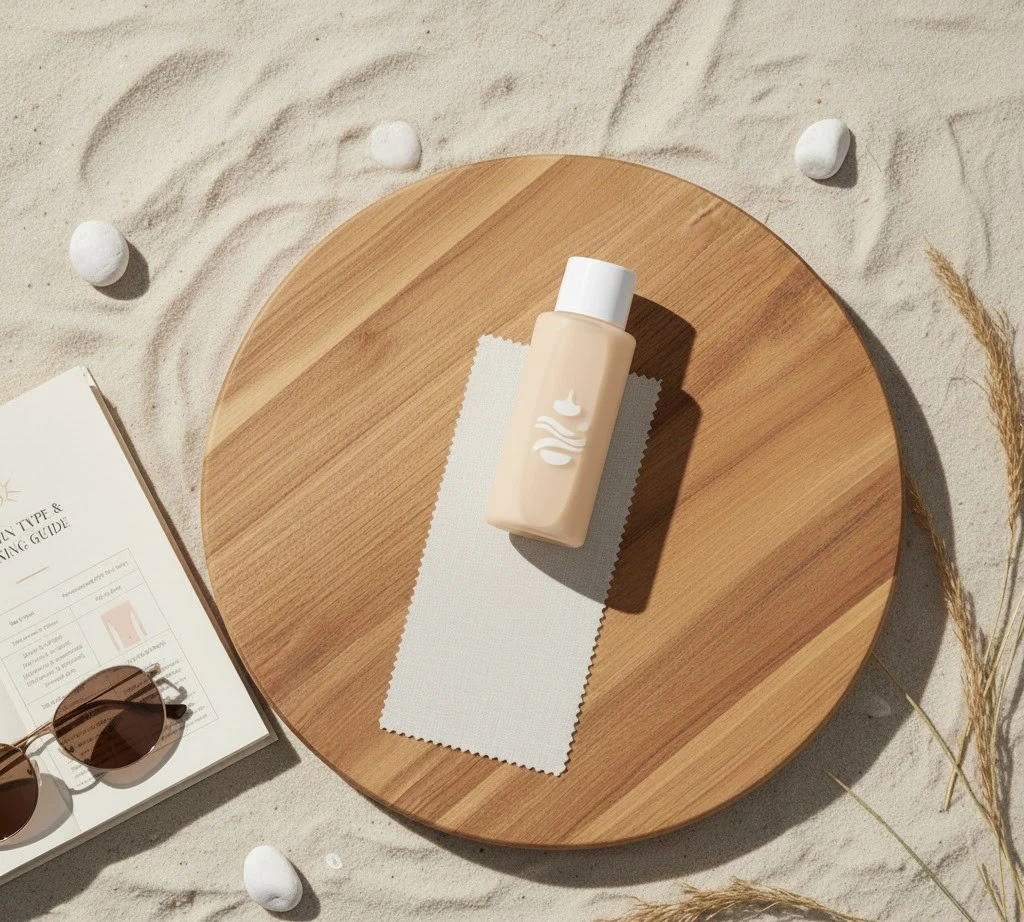
How They React
These skin types are the most UV-sensitive. According to the Mayo Clinic, people with very fair or freckled skin usually burn within minutes and tan poorly, if at all. Even mild exposure can lead to redness or peeling.
Recommended Frequency
- Indoor tanning: Once every 7 to 10 days, only for very short sessions. Always follow salon safety timers.
- Outdoor tanning: Limit exposure to 5–10 minutes early in the morning or late afternoon.
- Always wear a broad-spectrum SPF 30 or higher.
- Avoid back-to-back tanning days. Your skin needs time to repair.
Safety Advice
- Never try to “build tolerance” by extending time quickly.
- Moisturize after every session with aloe vera or ceramide lotion.
- Monitor your skin for redness that lasts more than 24 hours.
Your goal is to keep your skin calm and hydrated, not to rush color development. Fair skin rarely achieves a dark tan safely, so focus on gentle tone enhancement instead of frequent exposure.
Skin Type III and IV: Medium to Olive Skin
Medium to olive skin tones tan more easily but still need caution. Moderate tanning frequency and consistent hydration maintain a healthy glow without irritation.
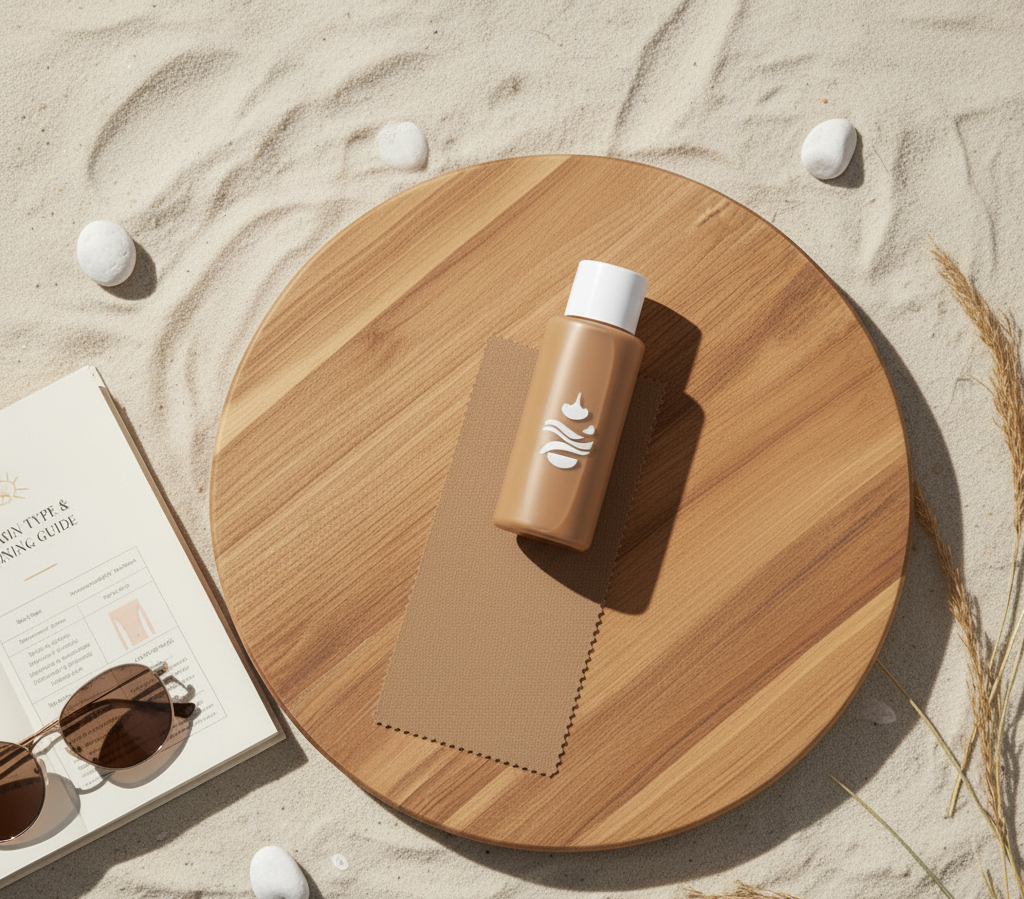
How They React
According to the Cleveland Clinic, medium and olive skin tones tan more easily and burn less often than fair skin. These skin types have moderate melanin protection, which means more flexibility but still a need for caution.
Recommended Frequency
- Indoor tanning: Every 3–5 days while building a tan, then reduce to once a week for maintenance.
- Outdoor tanning: 15–25 minutes depending on UV index, avoiding peak hours.
- Apply SPF 15–30 before every session to prevent cumulative damage.
Safety Advice
- Increase session length gradually instead of jumping to long exposures.
- Rehydrate skin with hyaluronic or shea-based moisturizers.
- Take a full week off tanning every month to let skin recover.
Even though medium and olive skin handle UV better, it can still develop photoaging and pigmentation if you skip rest periods or SPF.
Skin Type V and VI: Brown to Deep Skin
Deeper skin tones tan faster due to higher melanin levels. Even so, UV protection and hydration are essential to prevent uneven tone and dryness.
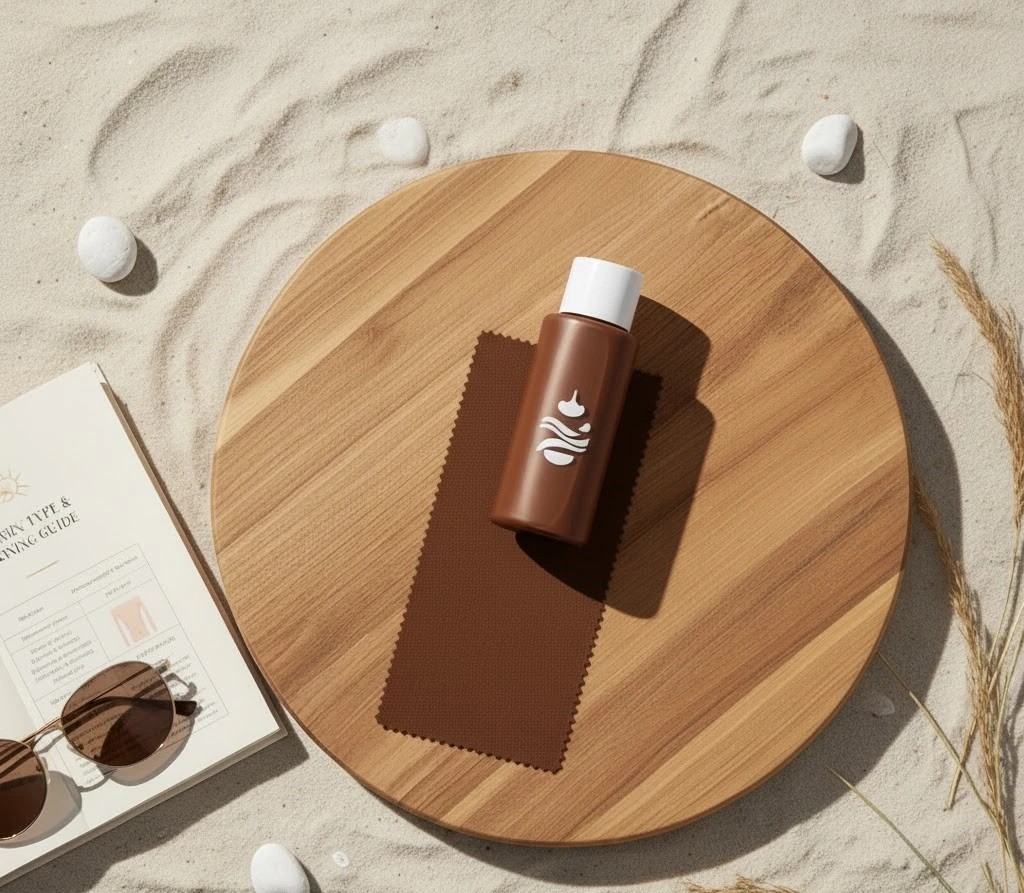
How They React
Brown and deep skin contain the most melanin, offering some natural SPF protection (roughly equivalent to SPF 13, according to dermatology studies). However, that doesn’t make them immune to UV damage.
Recommended Frequency
- Indoor tanning: Every 5–7 days, depending on lamp intensity.
- Outdoor tanning: 20–30 minutes per session, ideally before 11 a.m. or after 4 p.m.
- Always apply a lightweight SPF 15 or higher to prevent uneven pigmentation.
Safety Advice
- Focus on hydration and even tone rather than frequent exposure.
- Use vitamin E or cocoa butter-based lotions after tanning.
- Avoid assuming darker skin doesn’t burn; prolonged UV can still trigger dryness and hyperpigmentation.
Even deep skin benefits from rest days and sun protection. A consistent routine is safer than frequent, unprotected exposure.
How Often You Should Tan Indoors
Indoor tanning exposes your skin to artificial UV radiation. Although salons regulate timing and lamp strength, it’s still important to space out sessions.
Most experts recommend leaving at least 48 to 72 hours between sessions to allow your skin’s natural repair process. This rest period helps prevent peeling and premature aging.
Tanning Bed Frequency by Skin Type
| Skin Type | Suggested Frequency | Notes |
|---|---|---|
| I–II | Once every 7–10 days | Use low-intensity beds only |
| III–IV | Every 3–5 days | Gradually increase exposure |
| V–VI | Every 5–7 days | Keep sessions moderate |
These are broad guidelines. If your skin becomes red or sensitive, skip your next session.
When to Take Breaks from Indoor Tanning
Dermatologists advise rest breaks every few weeks to limit cumulative UV stress. If you see redness lasting longer than a day, or your skin feels tight or itchy, stop tanning until fully healed.
Long-term overexposure in tanning beds can cause premature wrinkles and increased cancer risk, according to the American Academy of Dermatology.
How to Track Progress Safely
Keep notes or photos of your tan development. If you notice uneven color, dryness, or burning, reduce frequency immediately. Your skin should darken gradually, never overnight.
How Often You Should Tan Outdoors
Outdoor tanning varies because natural sunlight changes throughout the day and year. UV levels are highest from 10 a.m. to 4 p.m., which is when you should limit exposure.
Always check the daily UV index. When it’s high (8 or above), shorten your time in direct sunlight or move to partial shade.
Ideal Sun Exposure Time by Skin Type
| Skin Type | Safe Starting Time | Max Exposure |
|---|---|---|
| I–II | 5–10 minutes | 15 minutes total with SPF 30+ |
| III–IV | 15–20 minutes | Up to 30 minutes with SPF 15–30 |
| V–VI | 25–30 minutes | 40 minutes with SPF 15 minimum |
The Skin Cancer Foundation recommends sunscreen even if you plan to tan. Sunscreen filters harmful UVB rays but still allows gradual bronzing through UVA.
Seasonal Impact on Tanning Frequency
Sun strength varies seasonally. In summer, UV is intense, so reduce your exposure and take longer rest intervals. In winter, you may need slightly more frequent sessions to maintain color, but the lower UV index means slower results.
How to Prevent Sunburn While Maintaining a Tan
- Apply broad-spectrum sunscreen before every session.
- Reapply every two hours and after swimming.
- Moisturize right after sun exposure to lock in hydration.
- Avoid tanning multiple days in a row.
- Seek shade when your skin starts to feel warm or tight.
Healthy tanning is slow, steady, and paired with aftercare.
Factors That Affect How Often You Should Tan
Your skin type isn’t the only factor that affects tanning frequency. Several lifestyle and environmental factors also change how fast your skin tans and recovers.
Type of Tanning Product Used
There are three main product categories:
- Bronzers and self-tanners: Color skin instantly without UV. Safe to use anytime.
- Tanning accelerators: Contain ingredients like tyrosine that may enhance melanin production but still require UV exposure.
- Natural oils: Can slightly intensify tanning but don’t protect from sunburn.
If you use a bronzer, you can reapply anytime because there’s no UV risk. With accelerators, always keep normal recovery time between sessions.
Tanning Duration and UV Intensity
Tanning too long or during high UV hours damages skin faster.
- Indoors, lamp strength varies by salon and bed level.
- Outdoors, check the UV index on your weather app before every session.
- The stronger the UV, the shorter the safe exposure.
According to the National Institutes of Health, prolonged UV exposure accelerates skin aging and raises cancer risk. Shorter, spaced sessions are safer and more effective.
Skin Health and Maintenance Habits
Healthy skin tans better and keeps color longer.
- Exfoliate weekly to remove dead cells.
- Moisturize daily, especially after tanning.
- Eat skin-supportive foods like carrots, nuts, and citrus.
- Hydrate well to prevent dryness and flaking.
If your skin feels tight or itchy, reduce frequency immediately. Good maintenance often extends a tan without more UV sessions.
Safety Tips for All Skin Types
Safety should guide every tanning routine. Whether indoors or outdoors, follow these steps to protect your skin.
Dermatologist Recommendations for Safe Tanning
Dermatologists emphasize moderation. The American Academy of Dermatology and Skin Cancer Foundation both report that any UV tanning increases long-term risks.
If you choose to tan, protect your skin every time:
- Use broad-spectrum sunscreen.
- Keep sessions short and spaced out.
- Do monthly skin self-checks for new or changing moles.
Importance of Aftercare
After tanning, your skin continues reacting to UV for several hours.
- Shower with cool water to calm inflammation.
- Apply a hydrating lotion with aloe vera or hyaluronic acid.
- Avoid exfoliating or shaving for 24 hours.
- Drink water to restore skin moisture from the inside.
Healthy aftercare makes your tan last longer and keeps your skin smooth.
When to Avoid Tanning Completely
Skip tanning if:
- You have open cuts, peeling, or sunburn.
- You are on medications that cause photosensitivity, like antibiotics or retinoids.
- You have a family history of melanoma.
- You’re under 18 (many countries legally restrict minors from tanning beds).
If you still want a glow, choose self-tanning products or sprays instead. They give color without UV exposure.
Conclusion
Your skin type determines how often you should tan.
- Very fair and fair skin need the longest recovery and minimal exposure.
- Medium and olive tones can handle moderate frequency but still need rest.
- Brown and deep tones tan faster but still require SPF and hydration.
No matter your tone, overexposure causes damage. Listen to your skin, protect it, and treat tanning as an enhancement, not a race. Healthy skin always looks better than over-tanned skin.
FAQs
1. Does darker skin need sunscreen while tanning?
Yes. Even deep skin tones can develop sun damage and uneven pigmentation. SPF helps maintain even tone.
2. How can I tan faster without burning?
Build gradually. Expose skin for short periods and increase slowly. Always use SPF to reduce burn risk.
3. Are tanning beds safer than sunlight?
No. The American Academy of Dermatology confirms that tanning beds expose you to the same damaging UV rays.
4. Can I tan two days in a row?
It’s not recommended. Your skin needs at least 48 hours to recover from UV exposure.
5. What’s the best aftercare routine?
Cool showers, hydrating lotion, and plenty of water. Avoid hot baths and exfoliation for at least 24 hours after tanning.


